Around this time, the internet has been overflowing with images that appear to show the world’s most influential tech leaders, the so-called "$1 Trillion Squad," gathered together in a single frame.
Seeing Elon Musk, Jensen Huang, Tim Cook, Mark Zuckerberg, Sam Altman, Satya Nadella, Sundar Pichai, and even Jeff Bezos side-by-side is certainly a surreal new phenomenon.
At first glance, the photos look like stills from a dystopian blockbuster, or maybe a cinematic poster for a tech-tycoon heist movie.
The idea of these notoriously busy figures suddenly appearing together in one perfectly staged moment only adds to the surreal appeal.
It's undeniably eye-catching.

But what makes these images even more fascinating is that, they show these CEOs doing ordinary, everyday things.
From grabbing drinks at a bar, sharing a late-night snack at a fast-food joint while they sit casually on the curb as if they’d just wrapped up a long night out, hanging around like petrolheads at the parking lot, dining at a Chinese restaurant, visiting an onsen, partying, goofing around, playing video games, passed out after getting drunk, and more.
Of course, none of these scenes ever happened.


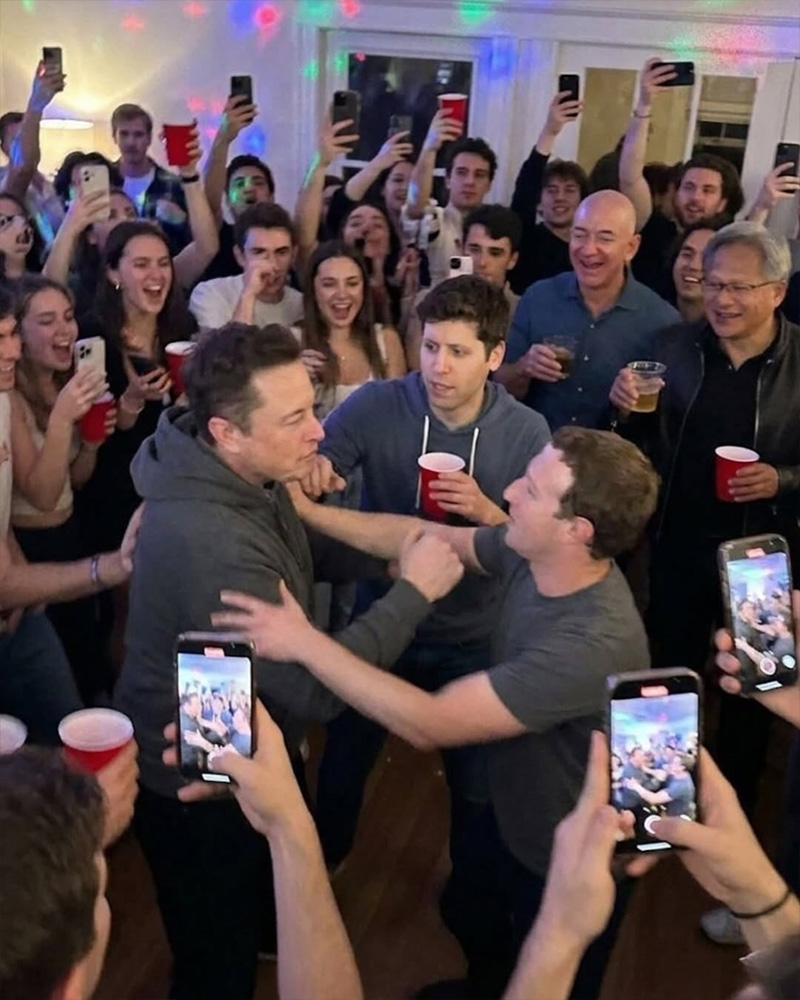

The images are entirely AI-generated. But that hasn’t stopped them from spreading at lightning speed.
Many people assume they’re real, even when the scenarios feel too cinematic or too perfectly staged to be believable.
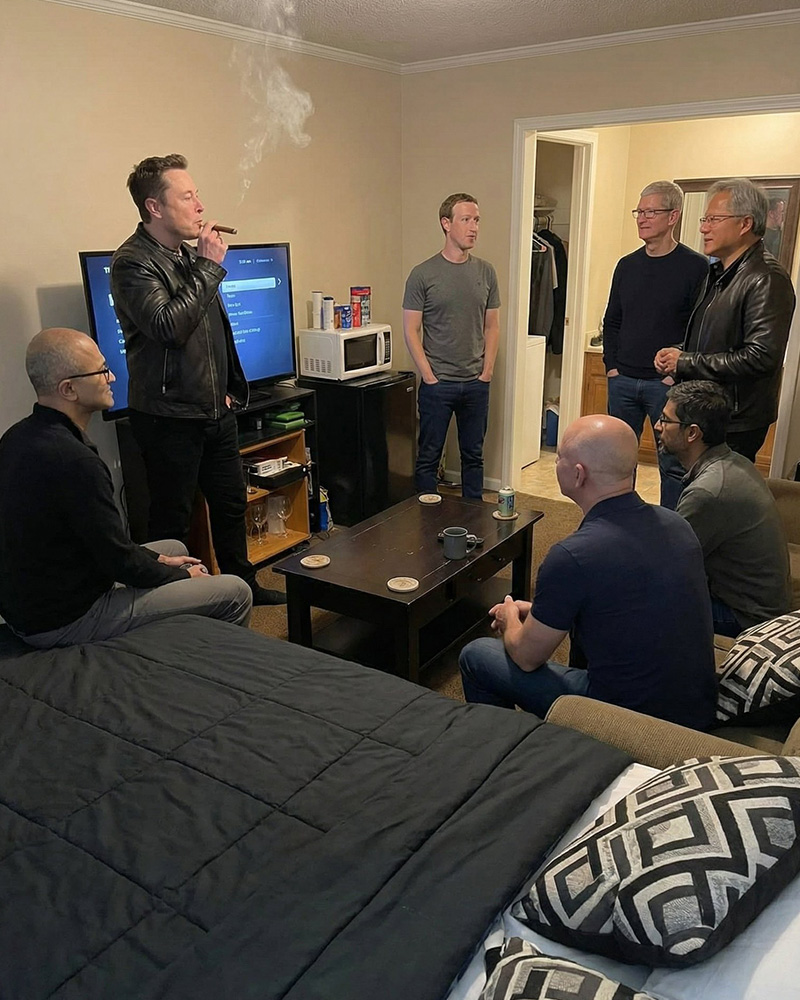
With a combined wealth exceeding well over $1 trillion, each of them run either a multi-billion or a multi-trillion-dollar company, having them casually meeting up for photos is practically impossible.
That impossibility is part of what made the images so intriguing, and part of why they captured so much attention before people realized they were fabricated.
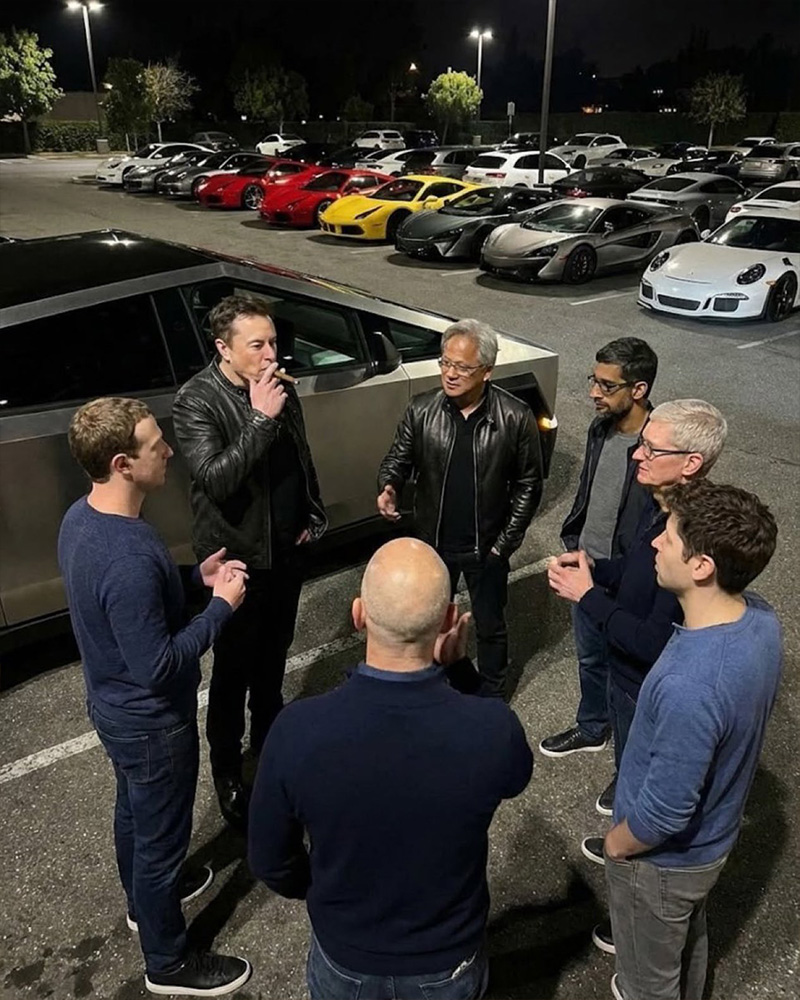
The reason so many viewers fall for them is simple: modern AI models have become remarkably good at recreating natural lighting, skin texture, depth of field, and camera behavior. They strike the perfect balance of familiarity, absurdity, and visual polish.
The faces are instantly recognizable, and our brains often smooth over small inconsistencies without thinking.

Studies even show that people mistake AI images for real ones at surprisingly high rates.
The realism is strong enough to erase the visual "tells" we used to rely on.
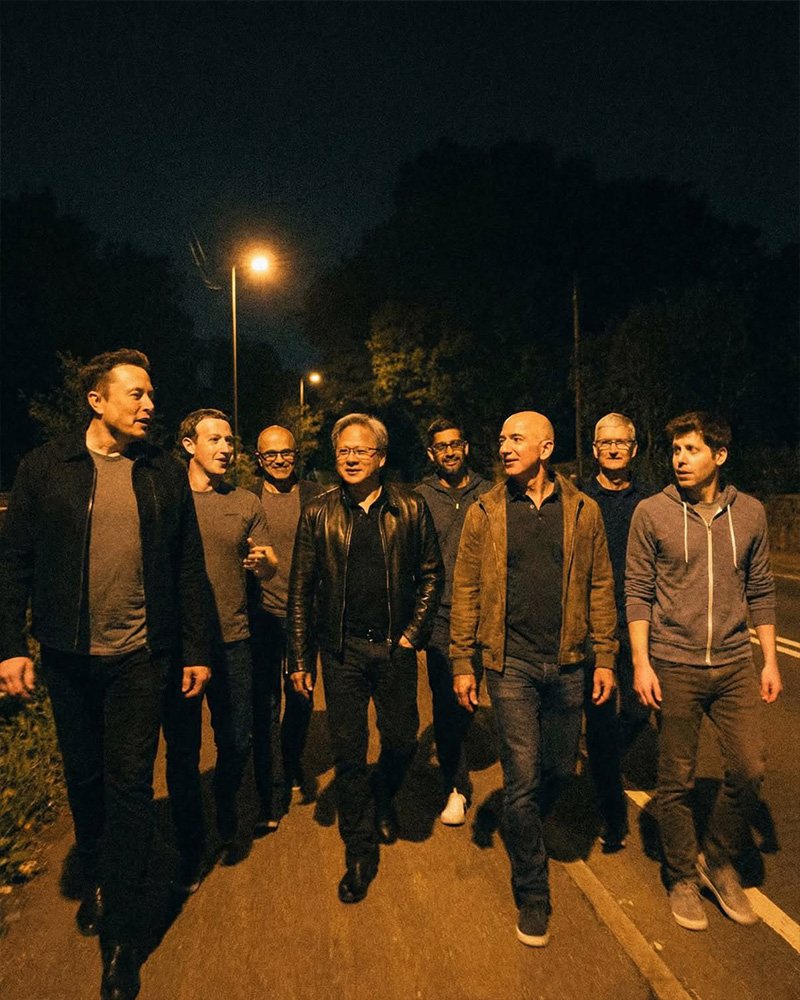
However, what really gives these images their punch is how perfectly they capture the cultural mood of 2025: a time defined by AI arms races, tech-giant rivalries, and an escalating global chip war.
The "$1 Trillion Squad" trend landed right in the middle of this hyper-competitive environment, where every update, every breakthrough, and every CEO statement sparks instant reaction online.
With AI companies battling for dominance, semiconductor firms pushing the limits of hardware, and tech leaders becoming full-fledged pop-culture icons, the public is more tuned in than ever to the shifting dynamics of the industry.

Against that backdrop, placing all these powerful figures in a single, dramatically staged frame feels almost symbolic.
The images portray them like antiheroes, or even cinematic villains, gathered in a moment of quiet intensity before a major confrontation.

It's an aesthetic that makes sense for the era: dramatic lighting, expensive cars, stoic expressions, and a sense of looming importance. A Cybertruck parked among glossy hypercars, the glowing haze of neon reflections, and their calm, controlled poses combine to create a scene that feels surreal yet strangely believable.

The result is a kind of visual mythology.
These people are the the pinnacle of success, and the images tap into people's collective fantasies about power and influence, feeding curiosity about what the world’s wealthiest and most recognizable tech leaders might be like when no cameras are around.
It blends realism with exaggeration just enough to feel authentic while still operating in a universe slightly larger than life.
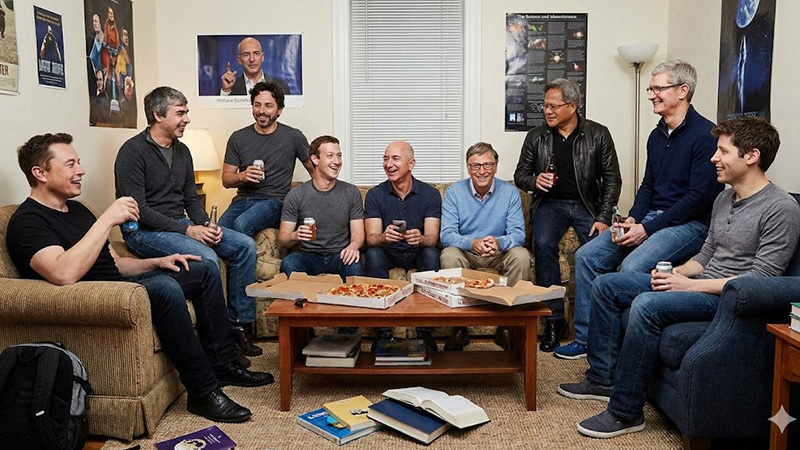
In other words, the images resonate because they reflect not just who these CEOs are, but what they represent in a world where technology shapes everything from culture to geopolitics.
The virality enticed others to contribute, and add even more tech leaders in to the mix.
Like adding founders of Google, Larry Page and Sergey Brin, Microsoft's Bill Gates,


But what began as harmless internet fun quickly revealed a more troubling side.
The internet is entering an era where even highly polished “photographs” can’t be trusted at face value. AI tools have become so advanced that fabricated scenes now carry the emotional weight and realism of genuine moments.
If an image featuring global figures can look this believable, the potential for misinformation or manipulation becomes harder to ignore.
Harmless memes today could easily turn into harmful deepfakes tomorrow, especially when they involve influential people with massive global impact.
The viral CEO images serve as a glimpse into this shifting landscape.

They show how quickly AI-generated content can shape narratives, influence perception, and blur the boundaries between fiction and reality.
As the technology accelerates, viewers must become more skeptical, more observant, and more aware that a compelling image doesn’t necessarily document the truth. In a world where seeing is no longer believing, digital literacy becomes more crucial than ever.
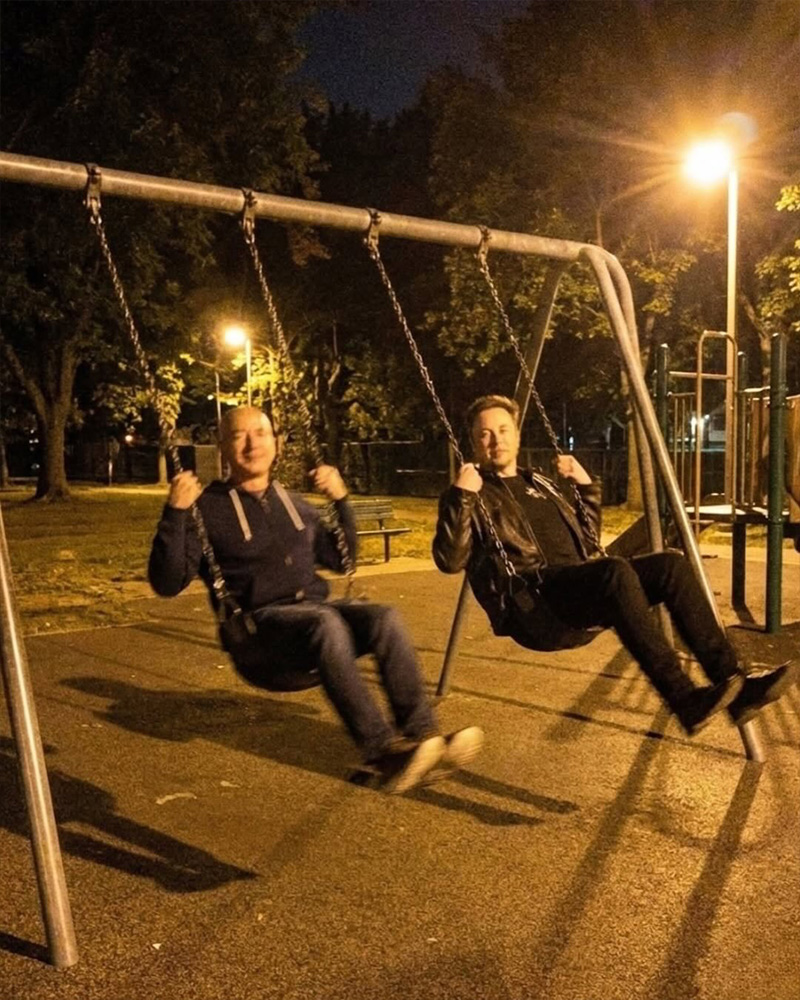
The viral frenzy erupted in part because the timing couldn’t have been more perfect.
Shortly before these images began circulating, Elon Musk announced a new update to Grok, his company’s conversational AI model.
The announcement instantly ignited social media, inspiring users to push the boundaries of AI-generated content.
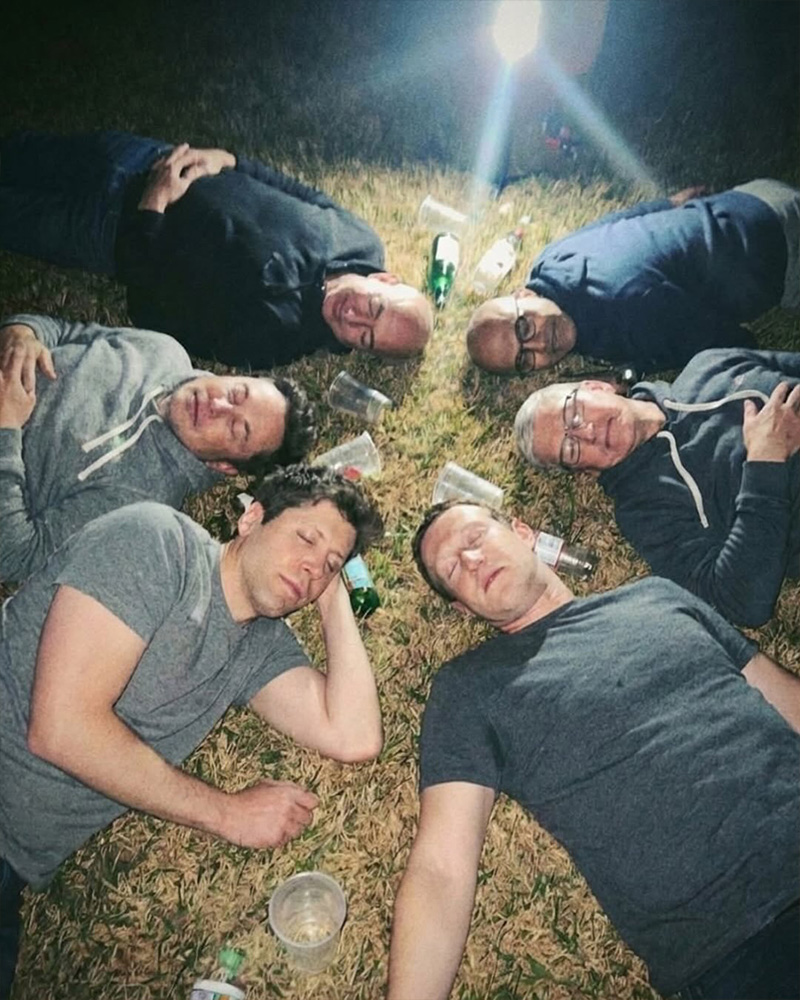
Riding that surge of excitement, people began experimenting with tools like Midjourney, Grok, and other image-generation platforms to create hyperrealistic portraits of the world’s most influential tech leaders.
The results were dramatic, cinematic, and strangely believable, in an irresistible blend of pop-culture aesthetics and Silicon Valley mythology.

